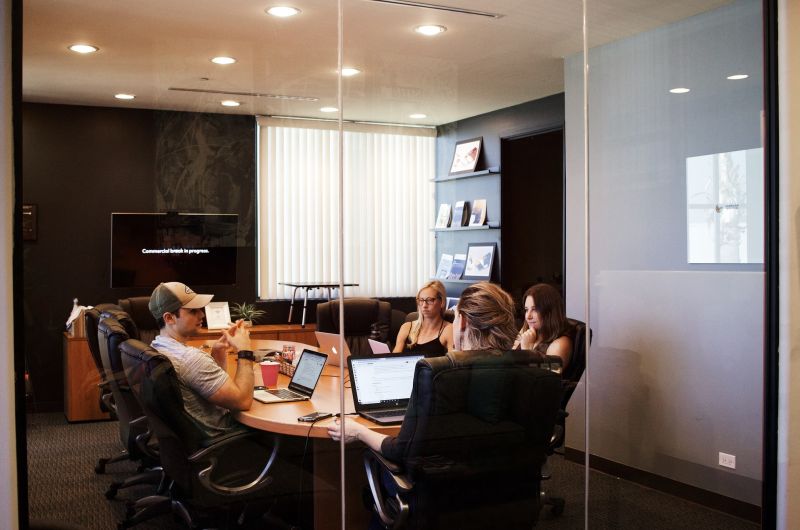HR Trends in 2022. Changes in The Human Resources Landscape
Last Updated on February 28, 2022 by VantagePoint
2021 was a year of deep upheaval across the HR, employment, and business landscapes. Propelled by such factors as the great resignation (which remains in full swing at 3.7%) and uncertainty over companies’ execution of the vaccine mandate, companies and employers nationwide have had to rethink a few HR policies.
Presently, companies are relaxing their hiring criteria, and hybrid work is more prominent than ever. We examine these and other HR trends in 2022 here:
1. Employee Retention
To stem the avalanche of resignations rocking the corporate scene, employers are adopting a series of employee retention strategies, the most obvious of which is increasing employee wages. Still, this is unlikely to be enough, as workers are beginning to prioritize care and peace of mind in their workplace over financial gains. Employers would have to navigate a shift in perspective, as employee experience will become a major talking point.
Talent acquisition will experience an expanded focus, with employers considering both internal and external sources in their search for the right fits for openings. There will also be a marked increase in internal mobility as recruiters will seek to look inwards to their in-house talent pool to fill vacant positions first. Further, more companies will delegate their talent acquisition process to AI and through mobile devices.
2. Employee Well-being and Workforce Health
You would imagine that the great resignation will necessitate a shift of focus to employee well-being and so it’s proved. Employers have added mental health, social, physical, and career well-being to their list of considerations on behalf of their employees.
There’s even been an aspiration, on the part of several companies, to extend this list of benefits to family members of their employees. Expect that to become the norm in the near future as the new generation of employees increasingly identifies employee well-being as a critical factor in their hunt for new jobs, according to this survey.
The spotlight on the mental health of workers has become progressively brighter following the fallout of the pandemic and this trend is set to continue. Beyond that, employers will be constrained to take a more hands-on role on the subject of general workforce health.

3. HR Trends 2022: The Future Is Hybrid
According to this survey by Accenture, 83% of workers are actively in favor of a hybrid work model, while 63% of high-growth companies have adopted a workforce model that allows their employees to be productive from any location. The extended pandemic has changed the perceptions of workplace values held by many employees, and a sizable number of workers now consider the ability to work from home an important job benefit.
All of these point to the fact that hybrid work, far from being a passing phase, is here to stay. For many companies (particularly tech companies), hybrid work does not disrupt their work ideals. Others have busied themselves with providing their remote workers with the right collaboration tools such as Slack and online whiteboards such as Stormboard. The Metaverse is another timely innovation with the capacity to engineer a reimagining of the corporate workspace. On the flip side, a hybrid workspace is likely to lead to an increased rate of employee turnover.
4. Diversity, Equity, and Inclusion in the 2022 Workplace
DEI has been a subject of intense consideration since the turn of the century. Now, in 2022, with companies more invested than ever in issues of social responsibility, the dynamics are shifting away from diversity towards inclusion and equity. During the pandemic, several companies lent their considerable resources as well as voices to antiracist, pro-equality, and DEI campaigns.
On the subject of equity, there’s an increased willingness on the part of corporate organizations to review their pay structure so that it reflects transparency and gender equality. Some are committing to schemes to subsidize the tuition fees of the children of their employees, while the subject of parental leave generates less rancor than it used to.
While there’s still a lot of work to be done, this survey by S&P 500 earning calls reveals a 658% increase in the frequency of discussions about equity, inclusion, and fairness among CEOs since 2018, which at least suggests progress. HR directors should consider paying special attention to the requirements of working parents and consider implementing special work practices to meet those needs, such as subsidized childcare and extended parental leave for new moms and fathers.
5. HR Trends in 2022: New Workplace Skills
The opportunity for growth and new skills acquisition is considered, by many employees, as vital to their work satisfaction and career fulfillment. Now, driven by the need to compensate for the loss of talent occasioned by the great resignation, employers and HR managers will place greater significance on upskilling and reskilling in-house talent to meet evolving workplace needs.
This is placed into sharper focus when you consider that the overall amount of skills necessary for a single profession is growing at a rate of 6.3 percent per year, and old skills are being replaced by new ones. It’s estimated that by 2022, 29% of the skills that were featured in the average job ad in 2018 will be obsolete.

6. Employee Experience, Engagement Techniques, and Benefits Packages
Since employee retention would be of paramount importance to employers and HR managers, there will be a more concerted effort to create the right employee experience among those circles. In addition to providing full benefits packages (extended to dependents of their employees), employers and HR personnel will most likely take a more central role in motivating their employees through any of the various engagement techniques identified here.
Benefits Packages
Employee benefits trends in 2022 need to be attuned to the present socio-economic climate. We have an extended article on the most important employee benefits, as well as the circumstances and regulations that influence them that we recommend you dive into in order to have a more clear picture of the trends for this year.
7. Data-Driven HR and People Analytics
Statistics reveal that by 2025, about 65% of the duties of the CHRO will be automated. And, in line with the shift of Human resource management from an operational discipline to a strategic one over the years, the data-driven approach to human resources management is about to become mainstream.
The CHRO wouldn’t have to rely on their instincts anymore when they use people analytics. HR workers can use analytics to make data-driven decisions. Furthermore, analytics aids in the evaluation of the efficacy of HR policies and actions.
As we move closer to a post-pandemic future, numerous changes in employment are taking place, whether it’s the growing popularity of hybrid work or the increased usage of automation. It is critical to make the right judgments in this age of change and uncertainty in order to navigate our new reality.
8. Employee and Workplace Values
In addition to wanting to feel heard and valued, employees are likely to actively seek out employers whose values match their own now more than ever, according to this report.
The new focus on remote work isn’t going to have a negative impact on workplace values. On the flip side, however, workplace toxicity in places where it occurred before will not be dampened by remote workspaces as well, so HR managers and personnel will need to be proactive in stamping it out.
Final Words
We’ve examined the HR scene from the last few years and used insights derived from occurrences from the past along with projected future reforms to predict HR trends in 2022.
If you want to keep manual and administrative employee management tasks to a minimum, say goodbye to paperwork and hello to HR time-saving efficiency and compliance, VantagePoint Benefit is here to help you and your employees from hire to retiree. Get in touch with our team!


